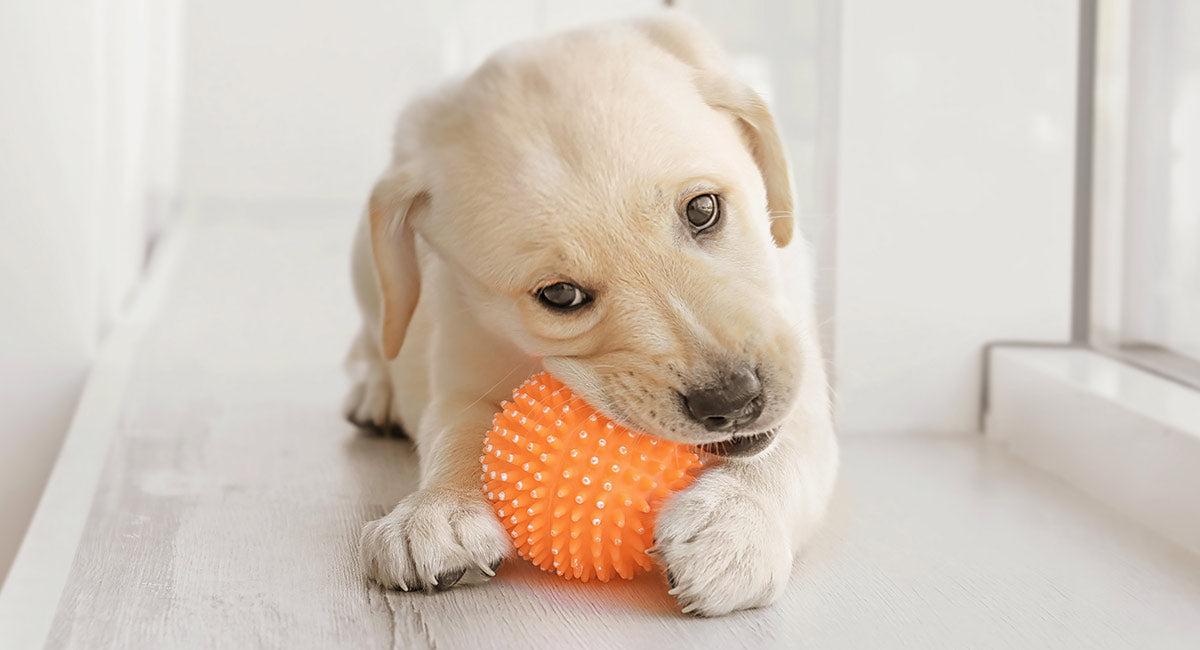In 24 cities

A Guide to Choosing the Right Chew Toys for Your Dog
|
|
Time to read 5 min
Get product availability and delivery timelines based on your location.
Are you sure you want to delete this address?
Help us ensure a smooth delivery
Help us ensure a smooth delivery
SIZE GUIDE
|
|
Time to read 5 min
When it comes to selecting the perfect chew toy for your furry friend, it can be a daunting task. With so many options available in the market, it's essential to know what to look for in a chew toy that's safe, durable and enjoyable for your dog. Chew toys are not only a source of entertainment, but they also help maintain your dog's dental health and provide a healthy outlet for their chewing needs.
Whether you're a new pet parent or a seasoned one, understanding the different types of dog toys, including dog chew toys and puppy chew toys, is crucial to making the right choice for your furry companion. In this guide, we'll explore the key factors to consider when selecting the perfect chew toy for your dog, including the material, size, and durability.
So, if you're in search of the perfect chew toy for your furry friend, keep reading to discover how to make an informed decision and select the best chew toy for your dog's needs. Let's dive into the world of dog chew toys!
Understanding your dog's chewing habits is crucial to selecting the right chew toy. Dogs have different chewing styles, and choosing a chew toy that suits their needs can help prevent destructive chewing behaviour.
Some dogs are Gentle Chewers and prefer soft, plush toys such as stuffed animals or fabric toys. These toys are ideal for small dogs or puppies that don't have strong jaws yet. However, if your dog is a strong chewer, these toys may not be the best option as they can easily tear them apart and potentially ingest the stuffing.
On the other hand, some dogs are Aggressive Chewers and require more durable toys such as dog bone toys, rubber toys, or chew toys made of nylon. These toys are designed to withstand heavy chewing and are perfect for large breeds or dogs with strong jaws. It's important to note that some dog chew toys are specifically designed for puppies, so always check the age range on the toy packaging.
Another type of chewing habit is a COMPULSIVE CHEWER. This is a common issue in dogs and can lead to destructive chewing behaviour if not managed properly. For compulsive chewers, choose toys that keep them engaged and distracted, such as puzzle toys or treat-dispensing toys. These toys can help satisfy their chewing needs and keep them mentally stimulated.
When choosing the right chew toy for your dog, consider their individual chewing habits, size, and age. Pet toys such as dog chew toys for puppies or dog toys online can offer a wide range of options to choose from. Always supervise your dog while they're chewing and replace any toys that are showing signs of wear and tear to prevent choking hazards.
When choosing a chew toy for your furry friend, it's crucial to consider the material of the toy. Different materials have different levels of durability and safety and appeal to your dog's chewing habits. Here are some common chew toy materials for dogs:
Rubber Toys: Rubber chew toys are popular choices for dogs as they are durable and can withstand heavy chewing. Some rubber toys can also be filled with treats, providing your dog with a toy and a tasty reward.
Nylon Toys: Nylon chew toys are also a durable choice for heavy chewers. They come in various shapes and textures, providing different chewing experiences for your dog.
When buying chew toys for your dog, it's essential to consider several factors to ensure you choose the right one that meets your dog's needs.
Consider the size of your dog: A large breed dog would require a bigger and more durable toy like the Goofy Tails Extreme Chew Bone Toy, while smaller dogs would need smaller ones that they can handle comfortably such as the Pawsindia Rubber Bottle Chew Toy. For puppies, it's essential to get puppy teething toys designed to soothe their teething pains.
Check the durability of the chew toy: Always choose a chew toy made of high-quality materials that can withstand your dog's aggressive chewing habits. Check for toys made of tough rubber, nylon, or other non-toxic materials that won't break apart quickly or pose any choking hazards to your dog.
As a responsible pet owner, you want to provide your dog with safe and durable chew toys. However, it's equally important to be aware of the types of toys potentially hazardous for your furry friend. Here are some toys to avoid when selecting chew toys for your dog:
Soft or Stuffed Toys: Soft or stuffed toys may seem like a good option for chewing, but they can easily be ripped apart, and the stuffing can be ingested by your dog, leading to choking or intestinal blockages.
Toys with Small Parts: Toys with small parts, such as buttons or beads, pose a choking hazard and can be easily swallowed by your dog.
Toys Made of Harmful Materials: Some toys may contain harmful chemicals or materials that can be toxic to your dog, such as lead or phthalates. Always check the label before purchasing any toy.
By avoiding these types of toys, you can ensure your dog's chewing habits are safe and enjoyable. Stick to toys made of durable materials designed for chewing purposes, like nylon or rubber. Always supervise your dog while they are chewing and replace any toys that show signs of wear and tear to prevent choking hazards.
Share this blog
Read More Articles


2 item in cart
₹10,360